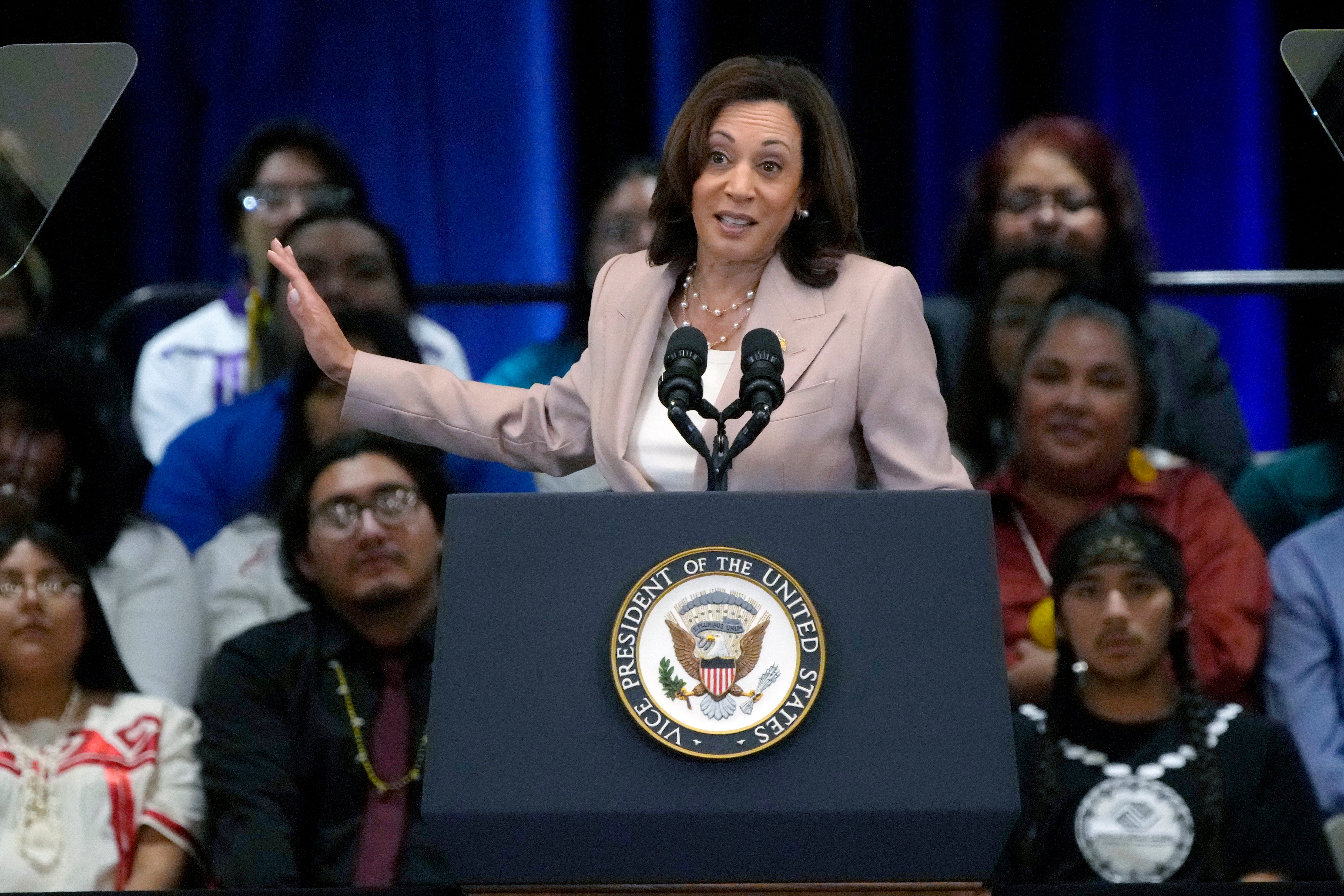Biden administration plans to cap how much families pay for child care through a government program
Vice President Kamala Harris says the government plans to put a cap on how much families pay for child care as part of the Child Care & Development Block Grant program

Your support helps us to tell the story
From reproductive rights to climate change to Big Tech, The Independent is on the ground when the story is developing. Whether it's investigating the financials of Elon Musk's pro-Trump PAC or producing our latest documentary, 'The A Word', which shines a light on the American women fighting for reproductive rights, we know how important it is to parse out the facts from the messaging.
At such a critical moment in US history, we need reporters on the ground. Your donation allows us to keep sending journalists to speak to both sides of the story.
The Independent is trusted by Americans across the entire political spectrum. And unlike many other quality news outlets, we choose not to lock Americans out of our reporting and analysis with paywalls. We believe quality journalism should be available to everyone, paid for by those who can afford it.
Your support makes all the difference.Vice President Kamala Harris said Tuesday that the government plans to put a cap on how much families pay for child care as part of the Child Care & Development Block Grant program.
Speaking to reporters, Harris went through the details of a proposed rule by the Department of Health and Human Services that follows an executive order on the issue that President Joe Biden signed in April. Families would pay no more than 7% of their income for child care through the program and child care providers would find it easier to be paid on time. The proposal also wants to encourage states to let families apply online for care.
Harris touted the possible savings for families.
“Let’s take a family in Montana making $46,000 a year—they could save about $80 every month, or almost over $1,000 a year,” the vice president said. “That money could go to gas and groceries or to fix a leaky roof.”
The program currently supports 1.5 million children. In 2016, the government established 7% of family income as the standard for affordable child care, but only 14 states follow that guidance in their offerings through the block grant program.
About 80,000 families would pay less for child care because of the cap. The rule would also waive payments for families who are at or below 150% of the federal poverty level.